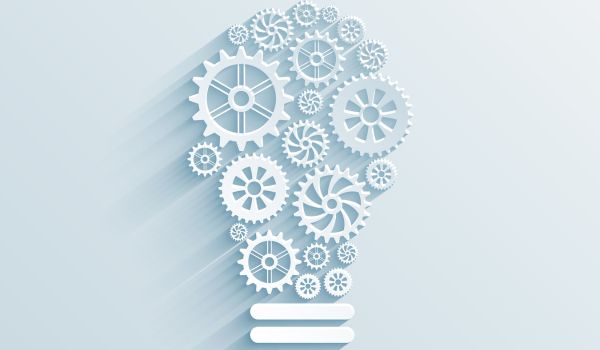Executive Summary:
The unique quality of generative AI is its capacity to produce responses that resemble those of humans. In this blog, we’ll look at how Gen AI with TensorFlow is improving the conversational skills of AI chatbots.
Introduction:
Artificial intelligence is undergoing a revolutionary transformation with the emergence of generative AI chatbots. . These engaging virtual conversationalists are changing how we interact with technology because generative AI powers them.
Generative AI chatbots are ready to usher in a new era of incredibly lifelike and context-aware interactions as the synergy between sophisticated machine learning frameworks like TensorFlow and the complexities of human language increases.
In this blog, we explore the world of Generative AI chatbots and examine how their integration with TensorFlow pushes them to the forefront of AI innovation and breaks the limits of human-computer interaction.
Understanding Generative AI Chatbots
Artificial intelligence has advanced significantly with the development of generative AI chatbots. Generative AI chatbots can create contextually relevant and dynamically generated replies, unlike their rule-based competitors, which adhere to established scripts and responses.
Fundamentally, generative AI chatbots understand huge datasets’ nuanced linguistic patterns and subtleties. By emulating the subtleties of human communication, this learning process helps them to comprehend context, humour, and even emotional undertones in text.
As a result, a conversational agent is created to provide comments that connect with users on a deeper level, resulting in more interesting and relevant encounters.
Generative AI chatbots perform best when answers like personalized conversations or open-ended questions cannot be preset. These chatbots create responses that seem natural and human-like by depending on their taught understanding of linguistic structures and semantics.
Because of their adaptability, they can go beyond the restrictions of programmed interactions and provide a more gratifying and intuitive user experience.
Powering Generative AI with TensorFlow
TensorFlow, a flexible and potent open-source machine learning framework created by Google, is at the core of the quick breakthroughs in generative AI chatbots. Thanks to its broad toolbox of pre-built components and modules, TensorFlow offers a solid basis for developing, training and deploying sophisticated language models designed explicitly for generative tasks.
The architecture of TensorFlow is built to manage the complex details of neural networks, making it especially adept at meeting the needs of Generative AI. Its adaptability enables scientists and programmers to experiment with different neural network topologies and modify them to suit the particular needs of generative language problems.
Developers may unleash the potential of Generative AI chatbots that not only understand the language but also produce useful and pertinent responses by utilizing TensorFlow’s capabilities.
Gen AI with TensorFlow speeds up research and paves the way for conversational agents that are extremely clever and flexible.
TensorFlow remains a cornerstone as the area of Generative AI develops, allowing academics and developers to push the limits of AI-driven dialogue. Generative AI with TensorFlow’s seamless integration is at the forefront of transforming static chatbots into conversational partners who are contextually aware and dynamic.
TensorFlow: Creating a Simple Generative Chatbot
Let’s get started building a straightforward generative chatbot with Python and TensorFlow.
For illustrative purposes, a straightforward RNN architecture will be used.
Import tensorflow as tf
from tensorflow.keras.layers import Embedding, LSTM, Dense
from tensorflow.keras.models import Sequential
# Define the model
model = Sequential([
Embedding(input_dim=vocab_size, output_dim=embedding_dim, input_length=max_seq_length),
LSTM(units=128, return_sequences=True),
Dense(vocab_size, activation=’softmax’)
])
# Compile the model
model.compile(optimizer=’adam’, loss=’categorical_crossentropy’, metrics=[‘accuracy’])
# Train the model
model.fit(x_train, y_train, epochs=num_epochs, batch_size=batch_size)
In this code snippet, we use TensorFlow’s Keras API to build a straightforward RNN-based generative chatbot. The model comprises three layers: an embedding layer that turns words into vectors, an LSTM layer that handles sequences, and a dense layer that creates the subsequent word in the sequence.
Conversational AI’s Future,
The development of conversational AI has been nothing short of astonishing, and as generative AI takes center stage, the future holds even more fascinating possibilities. The capabilities of chatbots are ready to undergo a paradigm shift, changing the field of human-computer interactions thanks to quick advances in machine learning and natural language processing.
With the help of tools like TensorFlow, generative AI chatbots are about to usher in a day where discussions feel uncannily human. Chatbots’ understanding of context, emotion, and even humor is continually being improved by research into Transformers, GPT models, and other generative structures.
We may anticipate chatbots engaging users with emotionally and contextually meaningful responses as these models advance.
Generative AI chatbots are also expected to become more adaptable and customized. These chatbots will foresee customer wants, customize responses, and even make proactive suggestions by looking at user behavior, preferences, and previous encounters. This level of personalized connection can create a sense of individualized attention and care, potentially redefining customer experiences.
Conclusion:
The conversational capabilities of generative AI chatbots have reached previously unheard-of levels because of the interaction between TensorFlow and Generative AI. Scripted responses are no longer the only option; dynamic exchanges that simulate human communication are now possible.
TensorFlow offers crucial tools to design and optimize these models for performance as Generative AI chatbots learn and adapt from massive datasets.
The exploration of the world of generative AI chatbots demonstrates how they can transform human-computer interactions. These chatbots are extending the capabilities of AI, from comprehending context to producing emotionally resonant responses. As we accept this evolution, it’s critical to be aware of the ethical questions and data privacy concerns it raises.










